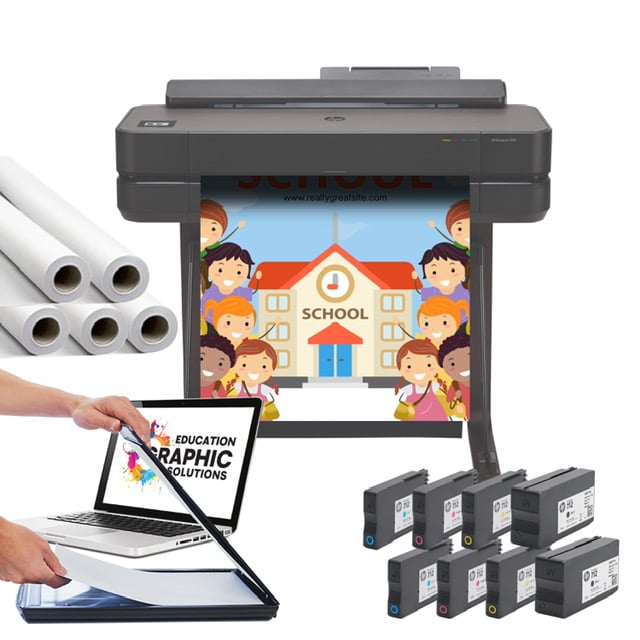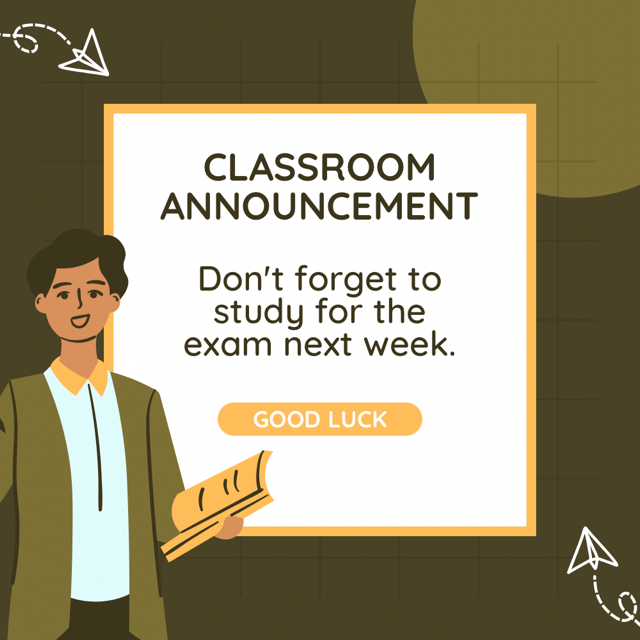Classroom posters are powerful tools that transform learning environments, engage students, and reinforce educational concepts. As a teacher, choosing the right posters, designing them effectively, and displaying them strategically can elevate your classroom’s aesthetic and educational impact. At Education Graphic Solutions, we specialize in providing top-tier Poster Printers and visual learning tools to help educators create vibrant, engaging classrooms. In this comprehensive guide, we’ll answer the most common questions teachers ask about classroom posters, offering actionable insights and best practices to optimize your classroom for learning and inspiration.
What Posters Should I Have in My Classroom?
Selecting the right posters depends on your subject, grade level, and teaching goals. According to Edutopia, visual aids like posters can enhance student comprehension by up to 400%. Here are five essential types of posters every teacher should consider:
- Educational Content Posters
Reinforce core concepts, such as math formulas, grammar rules, or historical timelines. For example, a multiplication table poster for elementary math or a periodic table for high school chemistry serves as a quick-reference tool.
- Why It Works: Visual learners (approximately 65% of students) benefit from seeing information presented visually.
- Example: A colorful solar system poster with fun facts about planets can spark curiosity in science classes.
- Motivational and Inspirational Posters
Posters with uplifting quotes, like “Stay Curious” or “Mistakes Are Proof You’re Trying,” foster a positive classroom culture.
- Why It Works: Positive messaging promotes a growth mindset, which Scholastic shows improves academic performance.
- Example: A poster featuring a Maya Angelou quote paired with vibrant imagery can inspire older students.
- Classroom Rules and Behavior Charts
Clear, visually appealing posters outlining expectations help maintain structure.
- Why It Works: Rule posters reduce disruptions by reinforcing behavioral standards.
- Example: A poster with concise rules like “Respect Others” in bold fonts.
- Interactive Posters
Posters with QR codes linking to videos or quizzes encourage hands-on learning.
- Why It Works: Interactive elements cater to kinesthetic learners and make lessons dynamic.
- Example: A history poster with a QR code to a virtual museum tour.
- Student-Created Posters
Encourage students to design posters for projects, fostering creativity and ownership.
- Why It Works: Student involvement promotes collaboration and critical thinking.
- Example: A group project poster on ecosystems, displayed to showcase student work.
How Education Graphic Solutions Helps: Our Poster Printers allow teachers to create customized posters tailored to their curriculum. With user-friendly design software included in our Poster Maker Packages, you can produce vibrant educational, motivational, or interactive posters that resonate with students.
What Are the Best Practices When Using Posters in the Classroom?
To maximize poster impact, follow these research-backed best practices from the National Education Association:
- Cater to Diverse Learning Styles
Appeal to visual, auditory, and kinesthetic learners with images, text, and interactive elements like QR codes.
- Tip: Place posters at eye level or in high-traffic areas for accessibility.
- Keep It Simple and Clear
Avoid cluttered designs. Use concise text, bold fonts, and high-contrast colors for readability from 5–10 feet away.
- Tip: Summarize information in bullet points or infographics.
- Rotate Posters Regularly
Refresh posters to align with lessons or themes to maintain student interest.
- Tip: Use laminated posters for durability, available through our Poster Printer Paper Supplies.
- Encourage Student Interaction
Assign poster projects or use posters as discussion starters.
- Tip: Incorporate student-created posters to build community.
- Align with Curriculum Goals
Ensure posters reinforce learning objectives, like a literary devices poster for English.
- Tip: Use posters to preview upcoming lessons.
How Education Graphic Solutions Helps: Our Poster Printers produce professional-grade posters with vibrant colors, ensuring your designs are visually appealing and educationally effective.
What Is the Best Way to Hang Posters in the Classroom?
Hanging posters correctly ensures they stay secure and look professional. Here are the best methods:
- Use Damage-Free Mounting Solutions
- Command Strips or Velcro are ideal for temporary displays without damaging walls.
- Tip: Use Velcro for posters you rotate frequently.
- Consider Placement for Visibility
- Place posters at student eye level (4–5 feet for elementary, 5–6 feet for secondary).
- Tip: Hang educational posters near relevant areas (e.g., math posters near the whiteboard).
- Use Frames or Laminates for Durability
- Laminating protects posters from wear, especially in elementary classrooms.
- Tip: Explore our Poster Printer Paper Supplies for durable laminating options.
- Avoid Overcrowding
- Too many posters can overwhelm students. Aim for 3–5 key posters per wall.
- Tip: Leave space between posters for a clean look.
- Incorporate Bulletin Boards
- Use bulletin boards for student work or event posters with colorful borders.
- Tip: Rotate content monthly to keep it fresh.
How Education Graphic Solutions Helps: Our Poster Maker Packages include laminating options, ensuring durable, professional posters. Request a free sample through our Poster Printers page to see the quality firsthand. Visuals in school matter.
How to Make a Good Classroom Poster?
Creating an effective poster requires creativity and alignment with educational goals. Here’s a step-by-step guide:
- Define the Purpose
- Determine if the poster is for education, motivation, or classroom management.
- Example: A science fair poster should highlight event details.
- Choose a High-Quality Design Tool
- Use the design software included in our Poster Maker Packages for user-friendly templates and drag-and-drop features.
- Tip: Select education-focused templates to save time.
- Prioritize Visual Hierarchy
- Place key information (e.g., title) prominently using larger fonts or bold colors.
- Example: A history poster with a bold timeline at the top.
- Incorporate Engaging Visuals
- Use high-quality images or illustrations that align with the theme.
- Tip: Use playful graphics for younger students, sophisticated designs for older ones.
- Keep Text Concise
- Use bullet points or infographics for quick comprehension.
- Tip: Test readability from 5–10 feet away.
- Add Interactive Elements
- Include QR codes or spaces for student input to make posters interactive.
- Example: A literature poster with a QR code to a book summary video.
How Education Graphic Solutions Helps: Our Poster Printers, starting at $2,495, come with intuitive design software in our Poster Maker Packages, allowing teachers to create professional posters in minutes.
What Should I Have Displayed in My Classroom?
Classroom displays should balance education, engagement, and aesthetics. Here’s what to prioritize:
- Curriculum-Relevant Materials
- Display posters that support current lessons, like a world map for geography.
- Tip: Rotate displays to match teaching units.
- Student Work and Achievements
- Showcase student-created posters to foster pride.
- Tip: Use a dedicated bulletin board for student work.
- Motivational Messages
- Include posters with affirmations to inspire positivity.
- Example: A “Stay Curious” poster near a reading nook.
- Classroom Rules and Schedules
- Display clear rules and schedules to maintain structure.
- Tip: Use bold fonts for visibility.
- Cultural and Seasonal Themes
- Reflect diversity with posters celebrating cultural events.
- Tip: Update seasonal posters for relevance.
How Education Graphic Solutions Helps: Our Poster Printers make it easy to create durable, vibrant posters that reflect your classroom’s visuals needs.
What Do Good Posters Look Like?
Good posters are visually appealing and educationally effective. Key characteristics include:
- Clear and Readable Typography
- Use bold, sans-serif fonts (e.g., Arial) for readability.
- Example: A poster with a 24-point title and 16-point body text.
- Vibrant, Contrasting Colors
- Use high-contrast colors (e.g., black on white) for readability.
- Example: A science poster with a blue background and yellow text.
- Balanced Design
- Arrange text and graphics harmoniously to avoid clutter.
- Example: A math poster with evenly spaced equations.
- Engaging Visuals
- Include relevant images or infographics.
- Example: A history poster with a timeline infographic.
- Purpose-Driven Content
- Every element should serve the poster’s goal.
- Example: A motivational poster with a single, powerful quote.
How Education Graphic Solutions Helps: Our Poster Printers produce high-quality posters with vibrant colors, ensuring maximum impact.
Mrs. Thompson, a 5th-grade teacher in Texas, used our Poster Printers to create a series of interactive science posters. By incorporating QR codes linking to NASA videos, she increased student engagement by 30%, as measured by class participation. “The posters are vibrant, durable, and so easy to make,” she says. “They’ve transformed my classroom into a hub of curiosity.”
How Education Graphic Solutions Helps: Our tools empower teachers like Mrs. Thompson to create engaging, curriculum-aligned visuals that inspire students.
FAQs About Classroom Posters
- How much does a poster maker cost?
Our Poster Printers start at $2,495, offering cost-effective in-house printing. Request a quote via our Poster Maker Packages page.
- Can I use a poster maker for other school projects?
Yes! Our printers support banners, bulletin board decorations, and more.
- How do I ensure posters are durable?
Use our Poster Printer Paper Supplies for laminating options to protect posters from wear.
Download Our Free Resource: Get our “Classroom Poster Design Checklist” at schoolposterprinters.com/poster-maker-packages/ to create impactful posters.
Why Choose Education Graphic Solutions?
At Education Graphic Solutions, our Poster Printers and Poster Maker Packages revolutionize classrooms by providing:
- Affordable Solutions: Starting at $2,495, with hardware, software, and support.
- High-Quality Output: Vibrant colors and crisp details.
- User-Friendly Design: Intuitive software for quick poster creation.
- Durability: Laminated posters with Poster Printer Paper Supplies for long-lasting use.
- Enhanced Engagement: Support for interactive and student-created posters.
Ready to transform your classroom? Request a free poster sample or quote at schoolposterprinters.com/poster-maker-packages/.

